
Building an Exomotive Exocet with a Tesla powetrain
As Told by Ben Horst
Photos by Ben Horst and Chadbee Photography
It makes sense why most electric vehicles on the market fit one of two molds: luxury sedans or unexciting commuter pods. After all, these two segments cover a large chunk of the total auto market. But we think that the really exciting part is exploring what can be done with the emerging technologies from the passenger-car world. That’s no different from the very beginnings of motor vehicles: As soon as there were cars, there were people tinkering to make them faster.
Our company, Eddy Motorworks, builds high-quality electric conversions, taking classic cars from rusty and sputtering to brilliant and thrilling. As we were starting off, we were also looking to build a flagship vehicle to prove the capabilities of a high-performance electric drivetrain in a nonconventional vehicle. At the time, we had two vehicles: a hybrid-electric track car prototype and an all-electric 1980 MGB. (We also now have two other EV conversions in the works, a DeLorean and a Mercedes 380SL.)
Without exception, we bumped into Kevin Patrick from Exomotive at every event we took our cars to. He would be showing off his Exocet component vehicle kits, a chassis and body system based around the Miata, but we’d always end up talking about how cool an electric version of the Exocet would be — fittingly called the Electrocet.
Actually, I think we might have come up with the name first, and then worked out the idea for the Electrocet itself. However it happened, I sat down with Kevin a couple weeks later with a stack of powertrain options for the project. I told him that they were ordered by increasing performance, so of course he flipped straight to the last page. It was titled “Tesla Model S Large Rear Drive Unit and 52 kWh Battery Pack.”

I built a computer simulation that calculated performance of EVs based on the build specs for this setup, and it predicted a range of over 280 miles and a 0-60 mph time of 3.0 seconds. It looked great on paper (and software), and so the build began.
The first step was to get a totaled Model S as a donor. I scoured the online auctions daily until we found one that had all the right damage in all the right places, so as to not hurt the parts we actually needed. Kevin got it delivered to his shop in East Point, Georgia, and we initiated a tear-down and pulled the battery pack from the bottom of the car. In the Tesla, it’s packaged in one big, waterproof aluminum pancake, but for the Electrocet, we needed to disassemble the pack and grab the 14 individual battery modules.
We then dropped the rear subframe with the drive unit (Tesla’s term for the motor/inverter/motor controller/gearbox/differential assembly) and pulled the inner CV joints. After snagging a few other components from the donor car (connectors, water pumps, harnesses, pedal), we just had to fit all of these parts from a 4,500-pound car in a chassis that usually curbs at 1,600 pounds. Should be easy, right?
It helped that Warren van Nus, the original designer of the U.S. Exocet, gave me access to the CAD files of the original chassis. This allowed us to redesign about 60 percent of the tubular frame to accommodate the new powertrain before test fitting anything. After a couple months of welding, wiring, coding, and bolting, it was done. We had to make some extensive changes to accommodate the EV powertrain, but as you’ll see, the spirit of the standard Exocet remains.
In the place of the differential and fuel tank, we fit the drive unit, battery charger, DC-DC converter (takes the place of an alternator to keep the 12-volt battery charged), and radiators for the motor and inverter. Under the seats and in what used to be the transmission tunnel, we packaged 12 battery modules for a total of 52 kWh of energy at 300-volt. For comparison, the Nissan Leaf, which weighs 3,300 pounds, has a 24 kWh or 30 kWh pack. So at a total weight of 1,997 pounds, the Electrocet has a far better battery-to-weight ratio than even the Tesla Model S P100D.
That’s an important point, because after a few laps on the track, battery capacity becomes very important. The front of the Electrocet is strangely empty, except a large radiator for battery water-cooling and standard Miata steering and suspension. Inside the cockpit, we kept it simple, with just a couple custom color displays to convey battery and motor status and the usual stuff like speed and revolutions per minute (which go up to 16,000, by the way).
Since completion, we’ve taken the car out to Road Atlanta and Atlanta Motorsports Park for track days. The acceleration is ridiculous. Currently, it jolts from 0-60 mph in 3.2 seconds, but that figure might be lowered to 2.9 seconds with updates to traction and launch control.
But the platform is still a Miata at heart, so cornering is planted. Lap after lap, we had very few major issues. As with any custom-built race car, there are occasional thermal problems, but we’ve worked through those. So unless it’s over 95 degrees F outside, you can run the car flat-out all day without overheating the batteries.
Our next challenge is quick charging. The battery pack is big enough to give you plenty of juice for a 20-minute track day session before limiting power output by about 50 percent. At our current rate of charging, we can’t get it filled back up all the way before the next session. For street duty, the track mode can be dialed to either econ or sport, with a range of as much as 300 miles.
Besides Tesla’s private Supercharger system, there are a few main standards for fast charging: CHAdeMO, CCS, and SAE Combo. Any of these would work, it’s just a matter of getting the charge stations installed at tracks. We hope that will occur soon enough.
The joy of driving the Electrocet is unlike anything else. It’s so immediately responsive that it makes you feel a part of the driving experience in a way that you probably didn’t think electric cars could. We truly believe there’s a place in motorsport for EVs.
OK, they can’t outrun the LMP1 car on a straight yet, but I would argue that the smile-to-speed ratio is unbeatable. Even at relatively slow speeds, the Electrocet makes you feel like you’re piloting a fighter jet with a really good muffler. I don’t know where motorsport will go in the coming years, but my hope is that more people will look at EVs as more than just a luxury or commuter car. Given their high performance potential, that makes good sense as well.
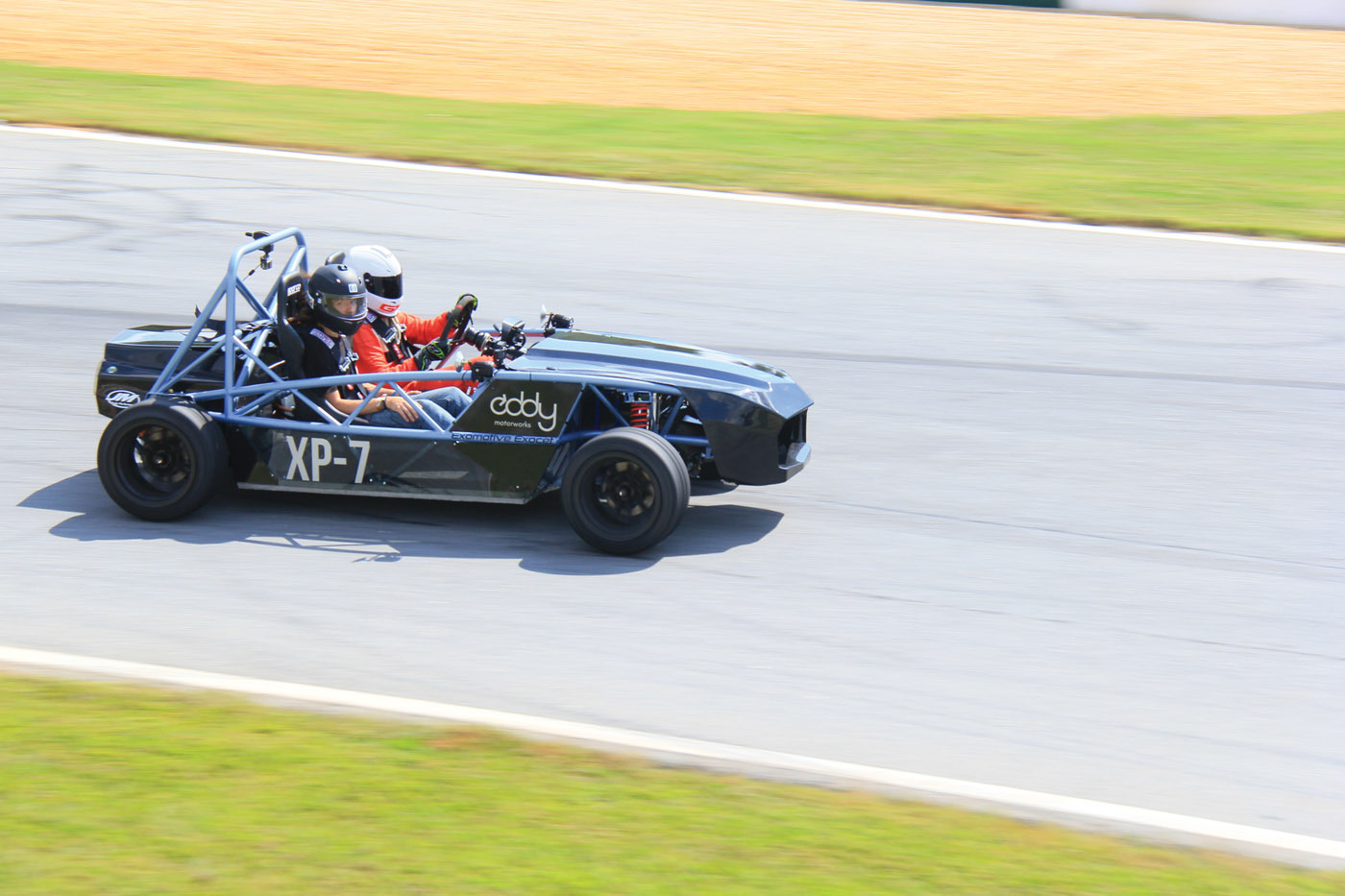



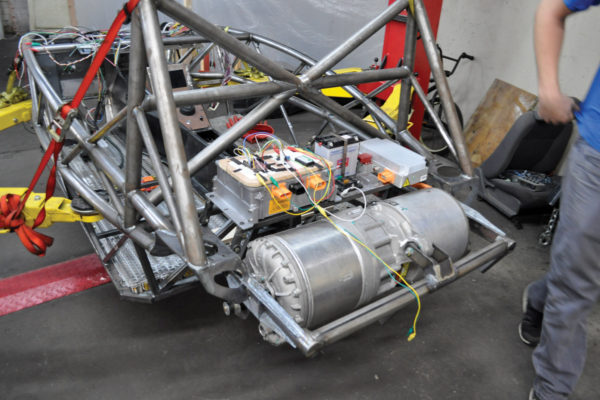
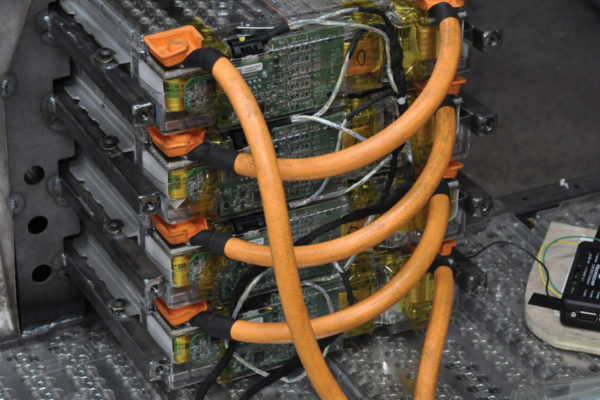
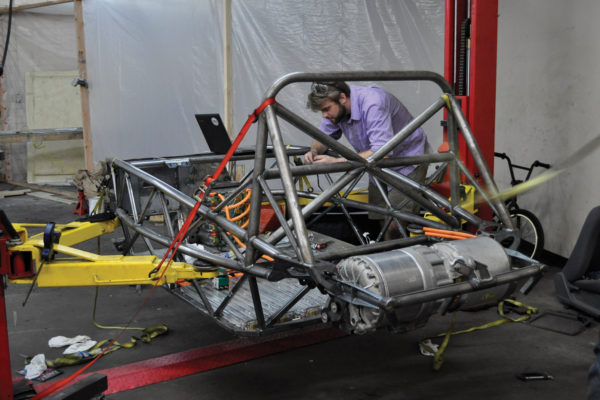
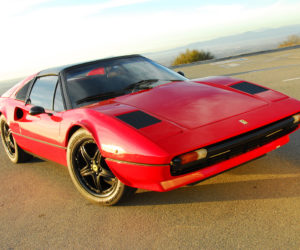

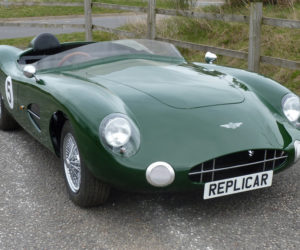
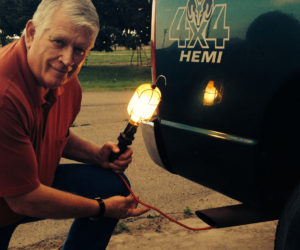
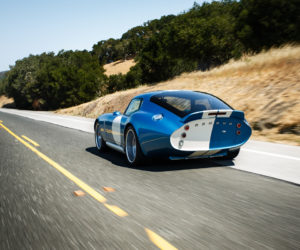
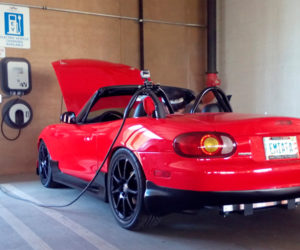




Comments for: Electrifying Potential
comments powered by Disqus